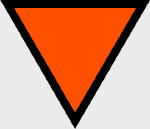Hobby Master HA7004 Royal Netherlands East Indies Army Air Corps Brewster B339C Buffalo Fighter - 2-VLG-V, Lt. Diebel, Batavia, Java, 1942 (1:48 Scale)
"Why should we have a navy at all? There are no enemies for it to fight except apparently the Army Air Force."
- General Carl Spaatz, Commander of the US 8th Army Air Force, after WWII
 Built by the Brewster Aeronautical Corporation in Queens, New York City, the F2A Buffalo was the first production monoplane fighter to enter service with the US Navy. The F2A was an all-metal, single-engine, single-seat, mid-wing monoplane with retractable landing gear and a tail hook for carrier operations. The control surfaces, i.e., ailerons, elevators and rudder, were metal framed but covered with fabric. The struts of the hydraulically-operated landing gear retracted into the underside of the wing while the wheels fitted into the stubby fuselage below the wings. The tail hook was fully retractable into the rear fuselage while the tail-wheel partially retracted into the rear fuselage. Because of its short wingspan, the F2A did not need a folding wing configuration to be accommodated on U.S. aircraft carriers.
Built by the Brewster Aeronautical Corporation in Queens, New York City, the F2A Buffalo was the first production monoplane fighter to enter service with the US Navy. The F2A was an all-metal, single-engine, single-seat, mid-wing monoplane with retractable landing gear and a tail hook for carrier operations. The control surfaces, i.e., ailerons, elevators and rudder, were metal framed but covered with fabric. The struts of the hydraulically-operated landing gear retracted into the underside of the wing while the wheels fitted into the stubby fuselage below the wings. The tail hook was fully retractable into the rear fuselage while the tail-wheel partially retracted into the rear fuselage. Because of its short wingspan, the F2A did not need a folding wing configuration to be accommodated on U.S. aircraft carriers.
The Buffalo entered squadron service in the summer of 1940 and it was not long before three serious defects were identified. The first was the landing gear; it was not strong enough for carrier operations. Brewster strengthened two weak struts but a real fix would require a redesign of the aircraft. The second defect was identified by reports from Europe which indicated that the Buffalo did not meet the performance criteria of other aircraft then in combat, e.g., armor protection, self sealing fuel tanks, etc. Armor protection was added to the F2A-3 resulting in a heavier, unstable aircraft. One solution was to use a more powerful Pratt & Whitney engine but this would require a redesign of the aircraft. The third problem was the Brewster company management who had a habit of promising more than they could deliver resulting in serious delays in the deliveries of the aircraft. The final straw came when the Navy realized that the Grumman F4F-3 Wildcat was a superior aircraft in virtually every respect so no further Buffalos were ordered.
Pictured here is a 1:48 scale Royal Netherlands East Indies Army Air Corps Brewster B339C Buffalo fighter that was flown by Lt. Diebel off Batavia, Java, during early 1942. Only 1,500 pieces produced and comes with numbered certificate of authenticity.
Sold Out!
Dimensions:
Wingspan: 8-3/4-inches
Length: 6-1/2-inches
Release Date: October 2007
Historical Account: "Windmills of the Pacific" - The Royal Netherlands East Indies Army Air Force (Militaire Luchtvaart van het Koninklijk Nederlands-Indisch Leger, ML-KNIL) was the air arm of the Royal Netherlands East Indies Army in the Dutch East Indies (now Indonesia) from 1939 until 1950. It was an entirely separate organization from the Dutch Air Force.
The ML-KNIL was founded in 1915 as the "Test Flight Service" (Proefvliegafdeling-KNIL, PVA-KNIL). In 1921, it became the "Aviation Service" (Luchtvaartafdeling-KNIL, LA-KNIL), before finally receiving the designation of ML-KNIL on March 30th, 1939. In 1950, after independence, its bases and facilities were handed over to the Indonesian Air Force.
On January 1st, 1942 the Dutch forces joined the American-British-Dutch-Australian Command, but at the onset of the Japanese assault the ML-KNIL was not up to full combat strength. Of the aircraft that had been ordered, only a small number had been delivered, and many were obsolete models. There were five groups, three of bombers and two of fighters, each of three to four squadrons. A sixth depot group provided support, transport and training. Reconnaissance aircraft were placed directly under command of the Army to give support to ground troops. Despite stubborn resistance the Japanese occupied the Dutch colonies, though numbers of aircraft found their way to northern Australia in order to continue the fight.
Following the fall of the NEI three joint Australian-NEI squadrons were formed. The first of these, No. 18 (NEI) Squadron RAAF, was formed in April 1942 as a medium bomber squadron equipped with B-25 Mitchell aircraft. The second joint Australian-NEI squadron, No. 119 (NEI) Squadron RAAF, was also to be a medium bomber squadron. No. 119 NEI Squadron was only active between September and December 1943 when it was disbanded to form No. 120 (NEI) Squadron RAAF which was a fighter squadron. Both No. 18 and No. 120 Squadrons saw action against the Japanese during World War II and against Indonesian nationalists during the Indonesian National Revolution before being disbanded in 1950.





![USAF Fairchild Republic A-10C Thunderbolt II Ground Attack Aircraft - 107th Fighter Squadron "Red Devils", 127th Wing, Selfridge Air National Guard Base, Michigan, August 2017 [D-Day Commemorative Scheme] (1:72 Scale)](http://cdn4.volusion.store/qh9e9-jdqv9/v/vspfiles/photos/HA1326-1.jpg?v-cache=1740197136)
![USAF Fairchild Republic A-10C Thunderbolt II Ground Attack Aircraft - "Hairless Joe", 47th Tactical Fighter Squadron "Termites", 917th Fighter Group, Barksdale AFB, Louisiana, 2012 [Low-Vis Scheme] (1:72 Scale)](http://cdn4.volusion.store/qh9e9-jdqv9/v/vspfiles/photos/HA1325-1.jpg?v-cache=1740197136)
